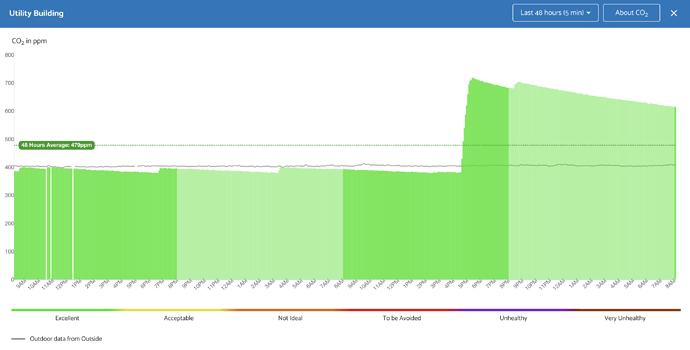We have two AirGradient air quality sensors - one indoor unit (AirGradient One) and one outdoor unit (AirGradient Open Air). Both have been running for a few months now.
The indoor unit is installed in a building that’s currently under construction. It is ~400 square feet (35m^2) and very close to air-tight. We can easily see CO2 spikes when the building is occupied, and the levels gradually drop back to ambient outdoors once the building is vacated again.
However, I have noticed a strange behavior when the building has been vacant for a period of time. The CO2 levels drop to around 400ppm and then show a sawtooth pattern - dropping to around 380ppm and then spiking back up to around 400pm before slowly dropping down again.
See the image below, which also includes a gray line from our outdoor unit. Please ignore the brief data blips in the middle of the chart - we had some connectivity issues yesterday.
Any ideas why we are seeing this behavior, and what we can do to eliminate it? In terms of calibration, the building is largely unoccupied so does converge to outdoor ambient CO2 levels at least once per week.


